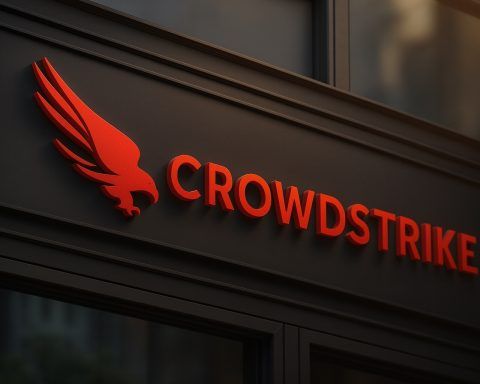Updated November 15, 2025
What changed this week
BigBear.ai (NYSE: BBAI) was the week’s defense‑AI headline maker. After the closing bell on Nov 10, the company beat Q3 expectations and announced a $250 million agreement to acquire Ask Sage, a secure generative‑AI platform already in use across U.S. government teams. Shares spiked on the news, then cooled into Friday’s close. BBAI finished Friday at $6.06, down 4.5% on the day but still higher week‑to‑date, as traders digested the beat and the big swing at platform expansion. [1]
Key numbers investors care about
- Q3 2025 revenue:$33.1M (‑20% YoY) vs. consensus ≈$31.8M. Gross margin: 22.4%. Adjusted EBITDA:‑$9.4M. Backlog:$376M. Cash:$456.6M (record, as of Sept 30). FY25 revenue guidance reaffirmed at $125M–$140M. [2]
- Bottom line nuance:Net income printed $2.5M in Q3, yet diluted EPS was ‑$0.03 because of share‑count and derivative‑related effects; basic EPS was +$0.01. [3]
- Ask Sage acquisition:$250M purchase price; ARR ≈ $25M in 2025 (about 6× YoY), >100,000 users across 16,000 government teams; closing expected late Q4 2025 or early Q1 2026. [4]
- Stock setup:$6.06 last trade (Nov 14 close). 52‑week range:$1.68–$10.36. [5]
- Short interest (as of Oct 31):~79.4M shares short (~18% of float); days‑to‑cover ≈0.5, highlighting elevated squeeze risk and volatility. [6]
Why the Ask Sage deal matters
Strategically, BigBear.ai is trying to shift from project‑heavy services into a secure, at‑scale AI platform for national security, border operations, and other regulated domains. Ask Sage brings a live, government‑cleared gen‑AI deployment surface, with a broad installed base that can be cross‑sold to BigBear’s existing customers. Management framed the combination as a “secure, integrated AI platform” that unifies models, data, and mission services—exactly what defense and homeland agencies are asking for as they move beyond pilots into production. The integration is expected to affect 2026 more than 2025 given the closing timeline. [7]
What moved the stock in November
Coverage this week emphasized the beat on revenue, the platform pivot via Ask Sage, and the sector‑level tailwinds for defense AI. Several outlets highlighted the ARR contribution and user footprint of Ask Sage, framing the deal as an accelerant for BigBear’s pivot. Meanwhile, commentary also noted that revenues are still down YoY and that sustained profitability remains a question—with the stock reacting accordingly as traders balanced promise against execution risk. [8]
Valuation snapshot (as of Nov 15, 2025)
Using Friday’s close and the latest share count on record, BigBear.ai’s market cap is roughly $2.65B (price $6.06 × ~436.5M shares outstanding). With cash ≈ $456.6M and long‑term debt ≈ $104.9M, enterprise value (EV) is about $2.3B. On the midpoint of 2025 revenue guidance ($132.5M), that’s ~17× EV/Sales—a premium multiple that assumes successful platform execution and contract conversion in 2026. [9]
Catalysts to watch next
- Share authorization vote (dilution overhang): BigBear.ai set a December 1, 2025 special meeting to double authorized common shares to 1.0B. This expands financing flexibility for M&A (like Ask Sage), PIK interest on converts, and compensation, but it also raises dilution risk—a classic near‑term overhang. Outcome and subsequent use of shares will matter. [10]
- Ask Sage closing & roadmap: Integration milestones, product packaging (platform pricing, security accreditations), and early cross‑sells will be read as proof‑points for 2026 growth. [11]
- Federal budget & awards cadence: Management flagged contracting delays tied to government shutdown dynamics; any clarity on appropriations or new awards can change the revenue trajectory (and sentiment) quickly. [12]
Risk check
- Revenue contraction and margin pressure: Q3 revenue fell 20% YoY and adjusted EBITDA stayed negative, underscoring that scale economics aren’t yet flowing through. [13]
- Accounting and guidance history: Earlier in 2025, the stock sold off on a restatement notice and a weaker outlook before guidance was later reset lower; those episodes keep skepticism alive until the platform story delivers hard numbers. [14]
- Financing/dilution: The authorized share increase—if approved—gives BigBear room to fund growth, but at the potential cost of shareholder dilution. Convertible structures also add complexity to EPS and valuation. [15]
- Execution vs. expectations: With an EV/Sales ~17× on 2025, the bar for execution in 2026 is high. Missed integration milestones or slower government adoption would pressure the multiple. [16]
Near‑term outlook (next 1–3 months)
- Base case: Elevated event‑driven volatility into the Dec 1 vote and the Ask Sage closing window. If shareholders approve the share increase and management outlines a disciplined use‑of‑proceeds plan, sentiment likely stabilizes near current levels while investors wait on early platform traction. [17]
- Bull case: Clear visibility on platform contracts (gen‑AI at the edge, border security, travel identity), clean closing of Ask Sage, and any positive budget/award headlines could refocus the market on 2026 ARR and backlog conversion. [18]
- Bear case: A contentious vote, perceived dilution without near‑term growth payoff, or new delays in government spend would likely compress the multiple from premium levels. The high short interest can amplify both up‑ and down‑swings. [19]
Bottom line
November’s news flow is supportive: BBAI posted a clean revenue beat, unveiled a platform‑defining acquisition, and heads into year‑end with ample cash, a $376M backlog, and a clear product thesis in secure defense AI. The flip side is that revenue is still contracting YoY, profitability is not yet durable, and the Dec 1 share authorization vote adds dilution risk to the story. For now, 2026 execution—not 2025 optics—will decide whether BBAI grows into its elevated multiple. [20]
Price & trading context (for reference): BBAI closed at $6.06 on Nov 14, with the week’s pop largely tied to the Q3 beat and Ask Sage announcement; coverage late Friday still showed shares up for the week despite pullbacks. 52‑week range sits at $1.68–$10.36, highlighting how sentiment‑driven this ticker remains. [21]
Sources & documents
- Q3 2025 earnings + Ask Sage acquisition (Business Wire / IR) including backlog, cash balance, guidance and closing timing. [22]
- Earnings details & EPS line items (IR income statement XBRL). [23]
- Share count, special meeting (Dec 1) & proposal to increase authorized shares (SEC DEF 14A; IR events). [24]
- Reaction/coverage of the week’s move (Barron’s; Motley Fool via Nasdaq/Yahoo syndication). [25]
- Price, 52‑week range and statistics; short interest (Yahoo Finance; MarketBeat). [26]
- Balance sheet datapoint (long‑term debt) from Q3 filings (FT/filing republish). [27]
References
1. www.businesswire.com, 2. www.businesswire.com, 3. ir.bigbear.ai, 4. www.businesswire.com, 5. finance.yahoo.com, 6. www.marketbeat.com, 7. www.businesswire.com, 8. www.barrons.com, 9. www.sec.gov, 10. www.sec.gov, 11. www.businesswire.com, 12. www.businesswire.com, 13. www.businesswire.com, 14. www.barrons.com, 15. www.sec.gov, 16. www.businesswire.com, 17. www.sec.gov, 18. www.businesswire.com, 19. www.sec.gov, 20. www.businesswire.com, 21. www.nasdaq.com, 22. www.businesswire.com, 23. ir.bigbear.ai, 24. www.sec.gov, 25. www.barrons.com, 26. finance.yahoo.com, 27. markets.ft.com







